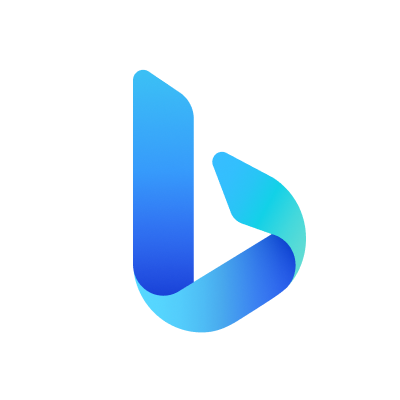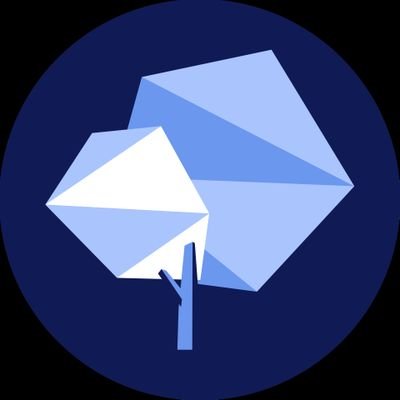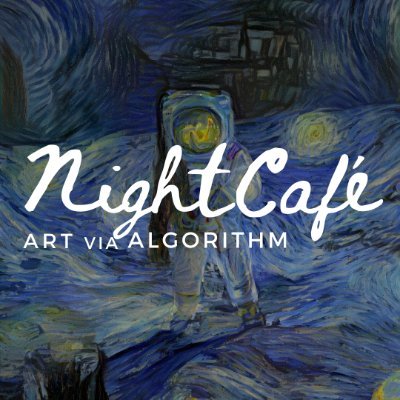10 Best FREE A.I. Art Generators Tools
Your go-to source for all things related to artificial intelligence. Our website is dedicated to providing you with the latest news, insights, more...
Your go-to source for all things related to artificial intelligence. Our website is dedicated to providing you with the latest news, insights, more...
Welcome to our latest blog post, where we delve into the fascinating world of artificial intelligence and its intersection with creativity. Today, we're exploring the top 10 FREE A.I. Art Generators that are revolutionizing the way we create and perceive art. These innovative tools harness the power of machine learning to transform simple inputs into stunning visuals, breaking down the barriers between technology and artistic expression. Whether you're an artist seeking new inspiration, a tech enthusiast, or simply curious about the capabilities of A.I., this list is sure to spark your imagination. So, let's dive in and discover the boundless possibilities of A.I. art generation!

|
|
Join: Discord Server |
MidJourney AI is an innovative AI-powered program that uses state-of-the-art technology to generate stunning images. It is an example of generative AI that can convert natural language prompts into images. MidJourney is an independent research lab exploring new mediums of thought and expanding the imaginative powers of the human species. They are a small self-funded team focused on design, human infrastructure, and AI.
Unlike Dall-E 2 or some of its other competitors, MidJourney offers a more dream-like arty style to your requests. It will likely appeal to those working within science-fiction literature or artwork that requires a more gothic feel.

|
|
Vsit: Bing Image Create |
Bing Image Creator is a free online tool powered by DALL-E that generates AI images based on your text. It is available to anyone with a Microsoft account on Windows 10 and Windows 11 devices. The tool works best when you're highly descriptive, so it's recommended to get creative and add details such as adjectives, locations, and even artistic styles such as "digital art" and "photorealistic".

|
|
Vsit: DALL·E 2 Labs |
DALL·E 2 is an AI system developed by OpenAI that can create realistic images and art from a description in natural language. It is a higher-resolution and lower-latency variant of the original DALL·E system, generating images based on user-written descriptions. DALL·E 2 can expand images beyond what’s in the original canvas, creating expansive new compositions, and can make realistic edits to existing images from a natural language caption, taking shadows, reflections, and textures into account.

|
|
Vsit: Starry AI Create |
StarryAI is an AI art generator app that transforms your words into works of art. You simply enter a text prompt and the AI creates a visual representation of the given text, making the typically complicated and technical process of AI art generation easy and user-friendly. The app is available for free on iOS and Android.

|
|
Join: Discord Server |
BlueWillow is a free AI artwork generator that creates stunning AI-generated images. It converts your prompt into AI artwork and is designed to be user-friendly and accessible to everyone. BlueWillow has a rapidly growing Discord-based community with over 110K users.

|
|
Visit: Dream AI Create |
Wombo Dream is a text-to-image AI art generator that produces original artworks depending on a text prompt. It is developed by Wombo, a Canadian firm that first gained notoriety for its AI-enabled lipsyncing video app of the same name. With Wombo Dream, you can enter a prompt, pick an art style, and the app turns your idea into an AI-powered painting in seconds.

|
|
Visit: Craiyon Draw |
Craiyon, formerly known as DALL·E Mini, is a free AI art generator that uses DALL-E Mini technology to generate images from simple text inputs. It has a user-friendly interface for AI art generation and lets you generate images for free. The tool is supported by ads. The workflow of Craiyon is simple: you come up with a text input, let the AI generate an image for the input, and enjoy the result.

|
|
Visit: Nightcafe Creator Studio |
NightCafe is an AI art generator and community that allows you to create beautiful art in seconds with the help of Artificial Intelligence. It offers a comprehensive suite of algorithms and options, including Stable Diffusion, DALL-E 2, CLIP-Guided Diffusion, VQGAN+CLIP, and Neural Style Transfer. Millions of people use NightCafe every month to create, share, and discuss AI art.

|
|
Visit: Stable Diffusion Web Playground |
Stable Diffusion is a deep learning, text-to-image model released in 2022. It is primarily used to generate detailed images conditioned on text descriptions, though it can also be applied to other tasks such as inpainting, outpainting, and generating image-to-image translations guided by a text prompt. Stable Diffusion is a latent diffusion model, a kind of deep generative neural network. Its code and model weights have been released publicly, and it can run on most consumer hardware equipped with a modest GPU with at least 8 GB VRAM.

|
|
Visit: DeepAI Text2Image |
DeepAI offers a suite of tools that use AI to enhance your creativity. You can enter a prompt, pick an art style, and DeepAI will bring your idea to life. With DeepAI's AI Image Generator, you can edit images in seconds by entering simple prompts such as "Make them blonde, make it winter, add volcano to the background, make it like a graffiti, make them wear a crown...". DeepAI also has an AI Image Editor and a Community Art Feed where you can explore and search AI images created by their community.
An AI Art Generator is a tool that uses artificial intelligence to generate art. These tools can take various inputs, such as text descriptions or images, and use them to generate new, original pieces of art. AI Art Generators can create a wide range of art styles, from photorealistic images to abstract paintings, and can be used by artists, designers, and content creators to generate unique visual content.
An AI art generator works by using machine learning algorithms to generate new, original pieces of art. These algorithms are trained on large datasets of existing art to learn the patterns and features that make up different styles and genres. Once trained, the AI can take an input, such as a text description or an image, and use it to generate a new piece of art that matches the given input. The exact process used by an AI art generator can vary depending on the specific tool and the algorithms it uses. Some tools use generative adversarial networks (GANs), which consist of two neural networks that work together to generate new images. Others use variational autoencoders (VAEs) or other types of generative models to create art.
AI Art Generators can create a wide range of art styles, from photorealistic images to abstract paintings. Some AI Art Generators are designed to mimic specific art styles, such as impressionism or cubism, while others can generate art in a variety of styles. The exact capabilities of an AI Art Generator depend on the specific tool and the algorithms it uses. In addition to generating original pieces of art, some AI Art Generators can also modify existing images, such as by changing the style or adding new elements. This allows users to create unique variations of existing images or to combine multiple images into a single piece of art.
To use an AI Art Generator to create your own art, you first need to find a tool that suits your needs. There are many AI Art Generators available online, some of which are free to use while others require a subscription or payment. Once you have found a tool that you like, you can start using it to generate art. Most AI Art Generators work by taking an input, such as a text description or an image, and using it to generate a new piece of art. For example, you might enter a text description such as "a sunset over the ocean" and the AI Art Generator will create an image that matches that description. Some tools also allow you to select a specific art style or to modify the generated image in various ways. Once the AI Art Generator has created an image, you can save it to your computer or share it online. You can also use the generated image as a starting point for further creative work, such as by adding additional elements or modifying it using other digital art tools.
Yes, there are limitations to what an AI Art Generator can create. These limitations depend on the specific tool and the algorithms it uses, as well as the quality and quantity of the training data it has been trained on. One limitation of AI Art Generators is that they can only generate art based on the patterns and features they have learned from their training data. This means that if an AI Art Generator has not been trained on a particular style or subject matter, it may not be able to generate art in that style or depicting that subject. Another limitation is that the quality of the generated art can vary depending on the complexity of the input and the capabilities of the AI Art Generator. Some tools may struggle to generate high-quality art for complex or abstract inputs, while others may be better suited for these types of inputs. Overall, while AI Art Generators are capable of generating a wide range of art styles and subjects, they do have limitations and may not be able to generate every type of art with equal quality.
Whether or not you can use the art generated by an AI Art Generator for commercial purposes depends on the specific tool and its terms of use. Some AI Art Generators allow users to use the generated art for commercial purposes, while others may have restrictions on commercial use. It is important to carefully read the terms of use for any AI Art Generator you plan to use for commercial purposes to ensure that you are complying with their policies. If you are unsure about whether or not you can use the generated art for commercial purposes, it is a good idea to contact the developer of the tool for clarification.
The quality of art generated by an AI Art Generator can vary and may not always match the quality of human-created art. AI Art Generators are capable of generating highly detailed and realistic images, but the quality of the generated art can depend on factors such as the complexity of the input, the capabilities of the AI Art Generator, and the quality and quantity of the training data it has been trained on. In some cases, the art generated by an AI Art Generator may be difficult to distinguish from human-created art, while in other cases it may be more obvious that the art was generated by a machine. Additionally, AI-generated art may lack the creativity and originality of human-created art, as it is based on patterns and features learned from existing data. Overall, while AI Art Generators are capable of generating high-quality art, they may not always match the quality or creativity of human-created art.
Yes, there are some ethical concerns with using AI to generate art. One concern is the potential for AI-generated art to be used to create fake or misleading images, such as deepfakes. This could have serious consequences, such as spreading misinformation or damaging the reputation of individuals or organizations. Another ethical concern is the potential for AI-generated art to be used to infringe on the intellectual property rights of artists. For example, if an AI Art Generator is trained on a dataset that includes copyrighted art, it may generate art that is similar to the copyrighted works, potentially leading to legal disputes. Additionally, there are concerns about the impact of AI-generated art on the art industry and the livelihoods of artists. As AI Art Generators become more advanced and capable of generating high-quality art, there is a risk that they could displace human artists or reduce the value of human-created art. Overall, while AI Art Generators have the potential to be a valuable tool for artists and content creators, it is important to consider the ethical implications of using AI to generate art.

Hello, I am AKM